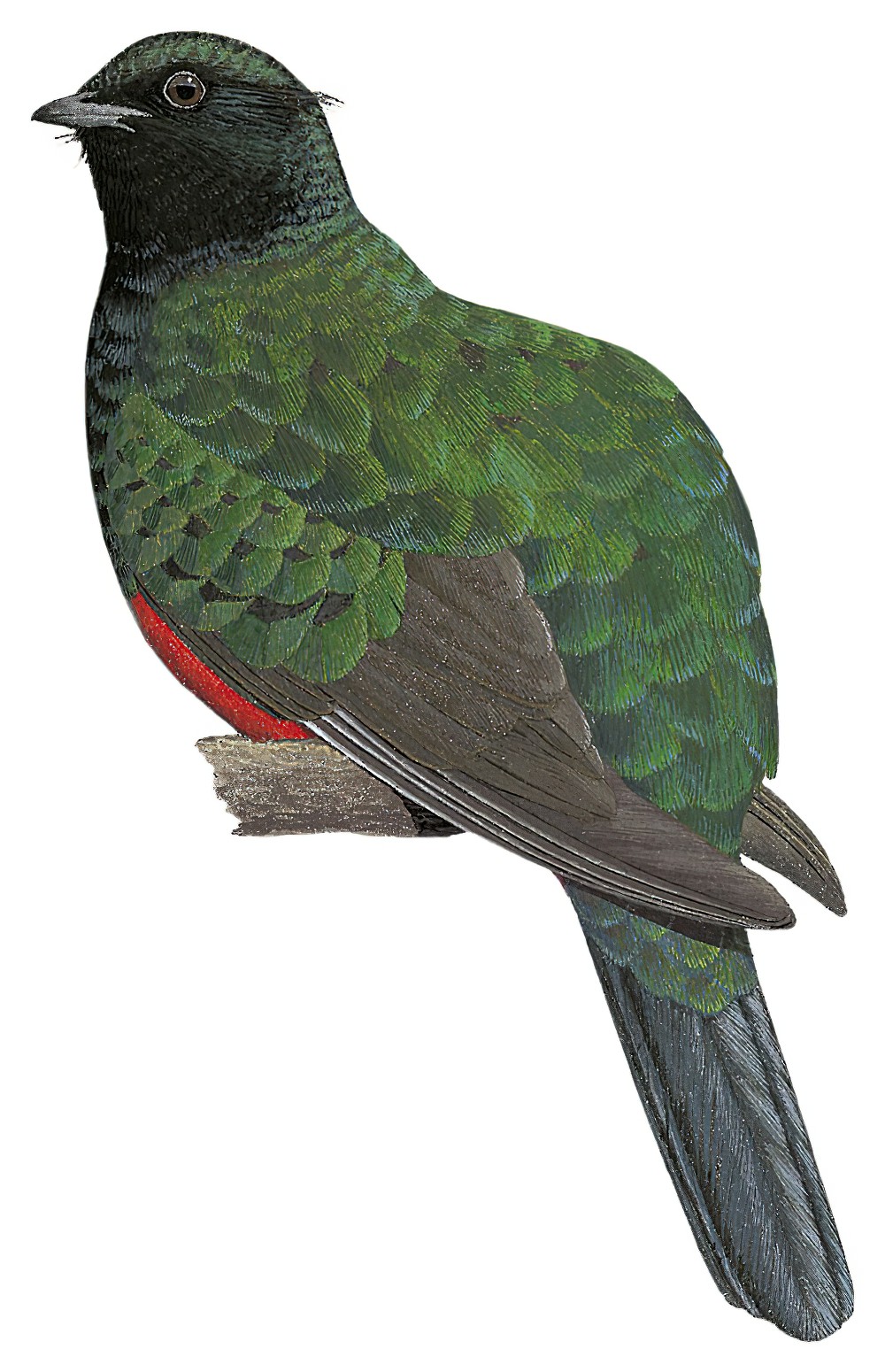Eared Quetzal / Euptilotis neoxenus

Eared Quetzal
SCI Name:
Protonym: Trogon neoxenus Monogr.Trogonidae pt3 pl.10,text
Taxonomy: Trogoniformes / Trogonidae / Euptilotis
Taxonomy Code: earque
Type Locality: Mexico.
Author: Gould
Publish Year: 1838
IUCN Status: Least Concern
DEFINITIONS
EUPTILOTIS
(Trogonidae; Ϯ Eared Quetzal E. neoxenus) Gr. ευ eu fine, beauty; πτιλον ptilon feather; -ωτις -ōtis -eared < ους ous, ωτος ōtos ear; "Only quetzal or trogon with elongated ear-coverts forming inconspicuous postocular plumes" (Forshaw & Gilbert 2009); "EUPTILOTIS NEOXENUS, Gould. Welcome Trogon. ... An examination of these additional examples at once convinced me that the species did not belong to the genus Pharomachrus, as I had previously supposed, but exhibited characters differing not only from those of that genus, but from those of all the other genera of the family, and consequently that a new genus must be established for its reception, and this I have accordingly done, under the appellation of Euptilotis. It will be seen, on reference to the accompanying plate, that not only does the bird differ from the Pharomachri in the character of its plumage, but that it has a more lengthened and less robust bill, and that the head is adorned with long and fine hair-like plumes, — a feature very unusual among the Trogons, and which is only to be found in this species and to a certain extent in Priotelus temnurus and Trogon roseigaster" (Gould 1858) (OD per Laurent Raty); "Euptilotis Gould, Monogr. Trogonidae, ed. 2, 1858, pt. 1, pl. 4 and text [= pl. 6 of volume]. Type, by original designation, Trogon neoxenus Gould. ... Not preoccupied by Euptilotus Reichenbach, 1850." (Peters, 1945, V, p. 149) (see neoxenus).
Synon. Leptuas.
neoxena / neoxenus
Gr. νεος neos new; ξενος xenos stranger, guest, visitor.
● "To these nine described species, he added two others apparently new to science, and which he characterized under the names of Ort. neoxenus and affinis; stating at the same time his doubts whether both might not be the females or young males of the imperfectly known species Ort. Sonninii or cristatus." (Vigors 1831) (syn. Colinus cristatus).
● “I have seldom been more gratified by the sight of any species of this beautiful family than I was on the receipt of the bird figured on the accompanying plate, which exhibits characters of the highest interest ... Judging from analogy, I should conceive that it is the young male of an aberrant species ... The difficulty of assigning a specific name to any species of which the young only has been seen has induced me to propose that of neoxenus (welcome stranger) for the present bird, adult examples of which will be sought for with the highest interest by every ornithologist.” (Gould 1838) (Euptilotis).
● “from the circumstance of its appearance throughout the whole of the southern portion of Australia being hailed as a welcome indication of the approach of spring and its arrival there associated with precisely the same ideas as those popularly entertained respecting our own pretty swallow in Europe” (Gould 1842) (Hirundo).
● "It is without doubt perfectly distinct from any other known species." (Cory 1886); "Cory's term neoxenus, based on a melano-erythristic mutation of frequent occurrence in Ontario and Florida" (Hellmayr & Conover 1948, XIII, 233) (syn. Ixobrychus exilis).
● "Engyptila neoxena, sp. nov. ... But two specimens of this interesting bird were taken and both were badly prepared. It is possible that a larger series would show it to be not specifically separable from E. jamaicensis." (Cory 1887) (subsp. Leptotila jamaicensis).
UPPERCASE: current genus
Uppercase first letter: generic synonym
● and ● See: generic homonyms
lowercase: species and subspecies
●: early names, variants, mispellings
‡: extinct
†: type species
Gr.: ancient Greek
L.: Latin
<: derived from
syn: synonym of
/: separates historical and modern geographic names
ex: based on
TL: type locality
OD: original diagnosis (genus) or original description (species)












